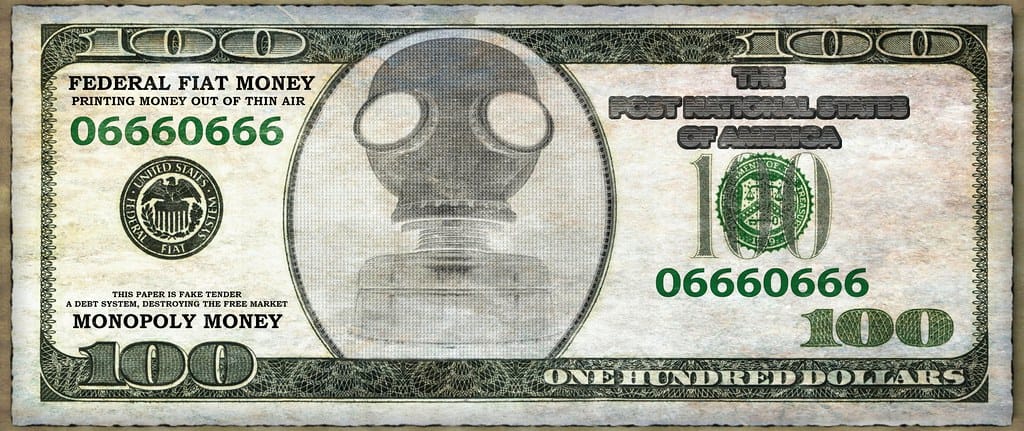The US Dollar's Historic Collapse: Why 2024 Could Be Currency's Worst Year Yet
The mighty US dollar, long considered the world's most stable currency and the backbone of global finance, is experiencing its most dramatic decline in modern history. As we approach the final quarter of 2024, economic indicators suggest this could mark the dollar's worst performance since comprehensive currency tracking began, sending shockwaves through international markets and reshaping global economic dynamics.
The Numbers Don't Lie: A Currency in Crisis
The Dollar Index (DXY), which measures the greenback against a basket of major currencies, has plummeted nearly 18% since January 2024—the steepest decline recorded in a single year since the index's inception in 1973. This dramatic fall has outpaced even the currency's worst previous performance during the 2008 financial crisis, when it dropped 13% over a full year.
Against individual currencies, the picture is equally stark. The dollar has lost 22% of its value against the euro, 19% against the British pound, and a staggering 25% against the Japanese yen. Even emerging market currencies, traditionally vulnerable to dollar strength, have gained significant ground, with the Mexican peso and Brazilian real posting double-digit gains.
The Perfect Storm: Multiple Factors Converge
Federal Reserve Policy Reversal
The Federal Reserve's aggressive pivot from its previous hawkish stance has fundamentally altered market dynamics. After maintaining interest rates at multi-decade highs, the Fed's recent decision to implement three consecutive rate cuts has eroded the dollar's yield advantage. The federal funds rate, which peaked at 5.5% in early 2024, now sits at 4.75%, reducing the currency's appeal to yield-seeking investors.
Mounting Fiscal Concerns
The US national debt has surged past $35 trillion, with the debt-to-GDP ratio approaching 130%—levels not seen since World War II. Credit rating agencies have issued stern warnings, with Fitch Ratings placing the US on negative watch and Moody's expressing concerns about long-term fiscal sustainability. This mounting debt burden has shaken confidence in the dollar's long-term stability.
Global De-dollarization Momentum
Perhaps most concerning for dollar dominance is the accelerating trend of de-dollarization among major economies. China and Russia have significantly reduced their dollar reserves, while the BRICS nations have announced plans for an alternative payment system. Even traditional US allies like France and Germany have increased their gold reserves while reducing dollar holdings.
Real-World Impact: Beyond the Markets
The dollar's decline extends far beyond trading floors, creating tangible effects for American consumers and businesses. Import prices have surged, with everything from electronics to clothing becoming more expensive. The average American household is spending an additional $200 per month on imported goods compared to last year.
Conversely, American exporters are experiencing a renaissance. Companies like Boeing, Caterpillar, and agricultural producers are reporting record overseas sales as their products become more competitively priced in international markets. The manufacturing sector has added 180,000 jobs in the past six months, partly attributable to increased export demand.
Global Ripple Effects
The dollar's weakness is reshaping international trade relationships. Countries that previously struggled with dollar-denominated debt are finding relief, with nations like Turkey and Argentina seeing their debt burdens effectively reduced. However, this shift is also creating new challenges for global central banks, many of which hold substantial dollar reserves.
Oil-producing nations, traditionally tied to dollar pricing, are increasingly accepting payments in alternative currencies. Saudi Arabia recently announced it would accept yuan for oil sales to China, marking a significant departure from the petrodollar system established in the 1970s.
What This Means Moving Forward
The dollar's historic decline represents more than a temporary market correction—it signals a fundamental shift in global economic power structures. While American policymakers are considering intervention measures, including potential currency market interventions and fiscal policy adjustments, the underlying structural issues remain largely unaddressed.
For investors, this presents both opportunities and risks. Dollar weakness could benefit emerging markets and commodity investments while challenging traditional safe-haven strategies. Consumers should prepare for continued import price inflation while businesses with international exposure may find new competitive advantages.
The question isn't whether the dollar will recover—currencies are cyclical by nature. The critical question is whether this decline marks the beginning of the end for dollar dominance in global finance, or simply a painful but necessary adjustment in an evolving multipolar world economy.
